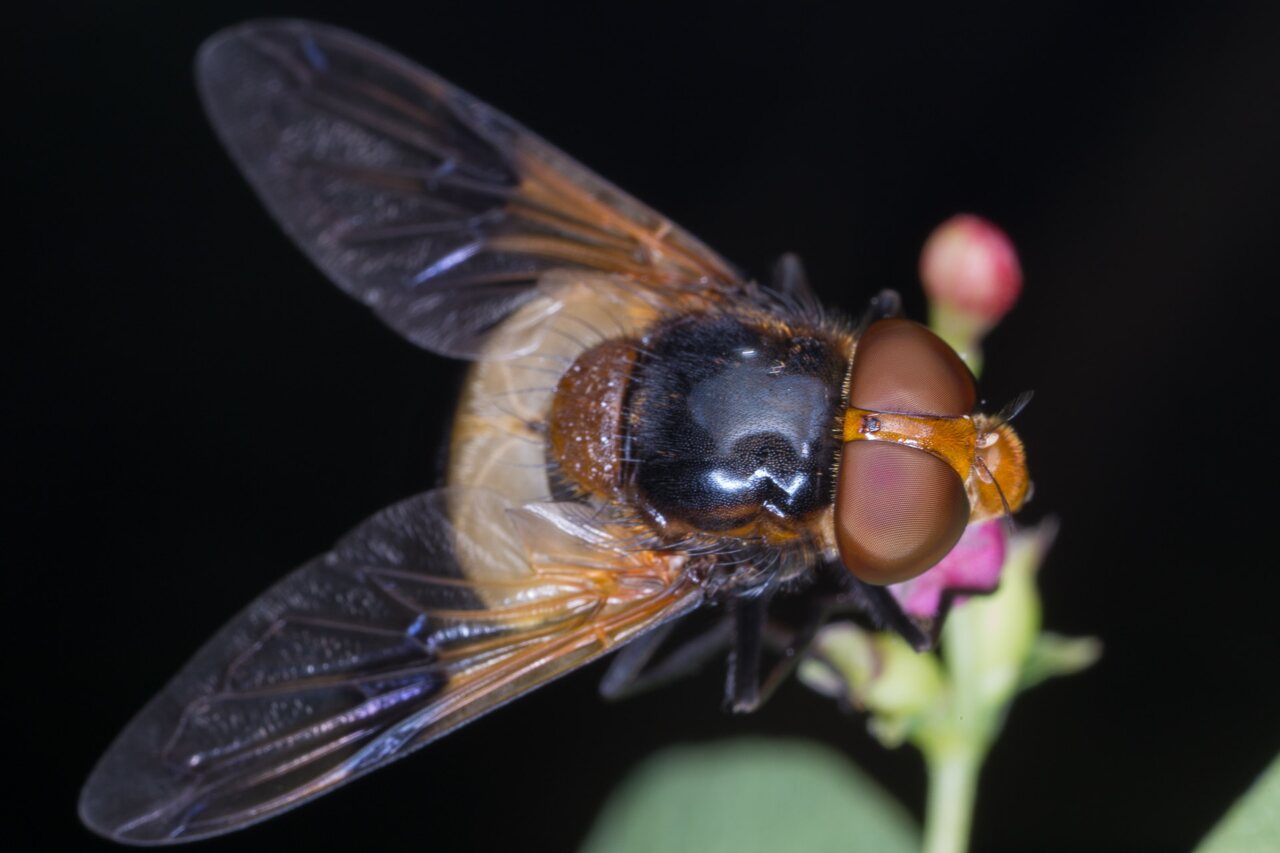
Volucella pellucens female · ilgaveidė ♀
- pellucid fly, pied plumehorn
- Hvidbåndet humlesvirreflue
- Gemeine Waldschwebfliege, Gemeine Hummel-Schwebfliege
- Ampiaisvieras
- witte reus
- trzmielówka leśna
- Fönsterblomfluga
- en.wikipedia.org/wiki/Volucella_pellucens
- flickr.com/photos/63075200@N07/albums/72157629452860500
- gbif.org/species/1541799
Adults live on nectar and pollen, as with most hoverflies, and visits a large range of flowers from May to October, showing a distinct preference for white flowers.
The female enters the underground paper nests of the Vespula vulgaris, V. germanica, and lays her eggs. Despite the conspicuous nature of the intruder, the hosts do not appear to register her presence as she makes her way into the otherwise well-guarded nest entrance.
When the eggs hatch, the larvae drop to the bottom of the nest chamber, where they feed as scavengers on debris. This may include dead wasp grubs and adults, remains of food brought into the nest by the wasps, and other insects living there. Mature larvae are sometimes on the combs and have been recorded feeding on dead or moribund wasp larvae and pupae that were left in the combs when the nest was abandoned by the wasps in the autumn. Fully grown larvae leave the nest and pupate in the soil below. If the host nest is in the roof or walls of a house, then the larvae may end up crawling about in the dwelling space. Adult hoverflies emerge the following year from about mid-May to June.
‥
0 comments
Add a comment